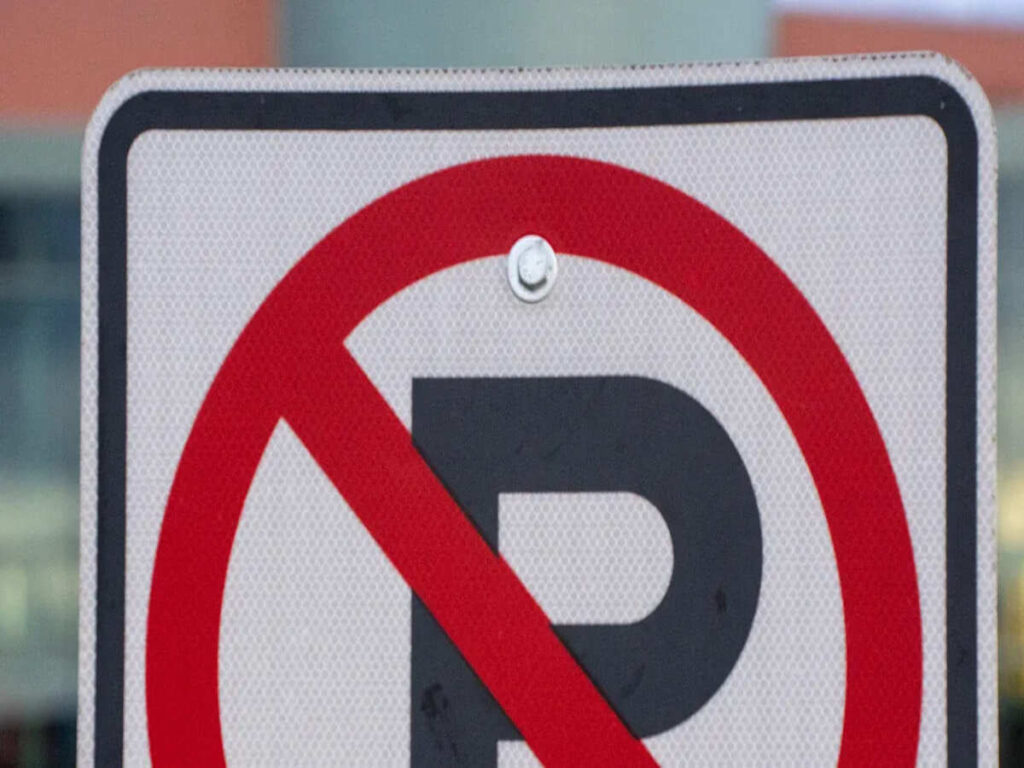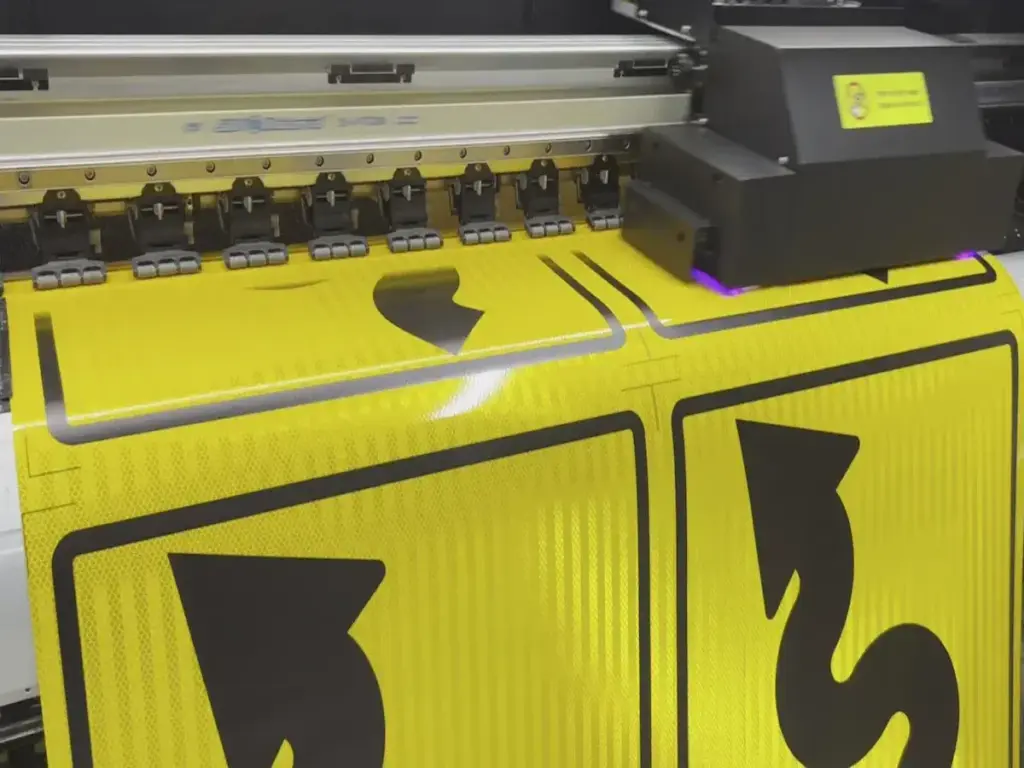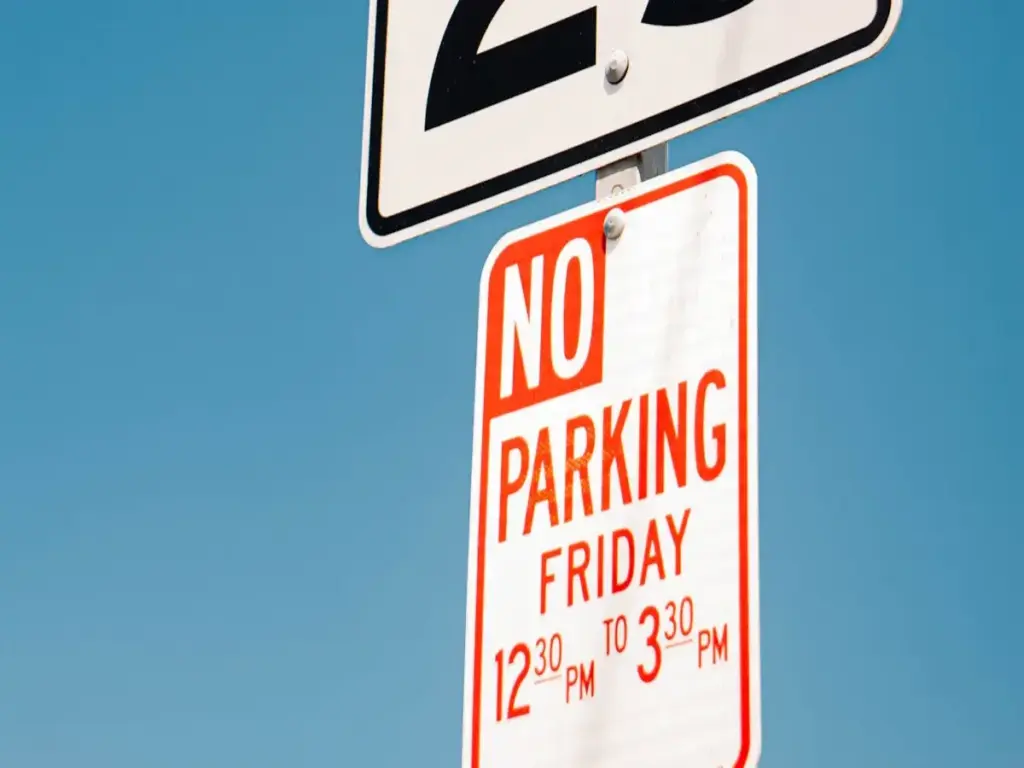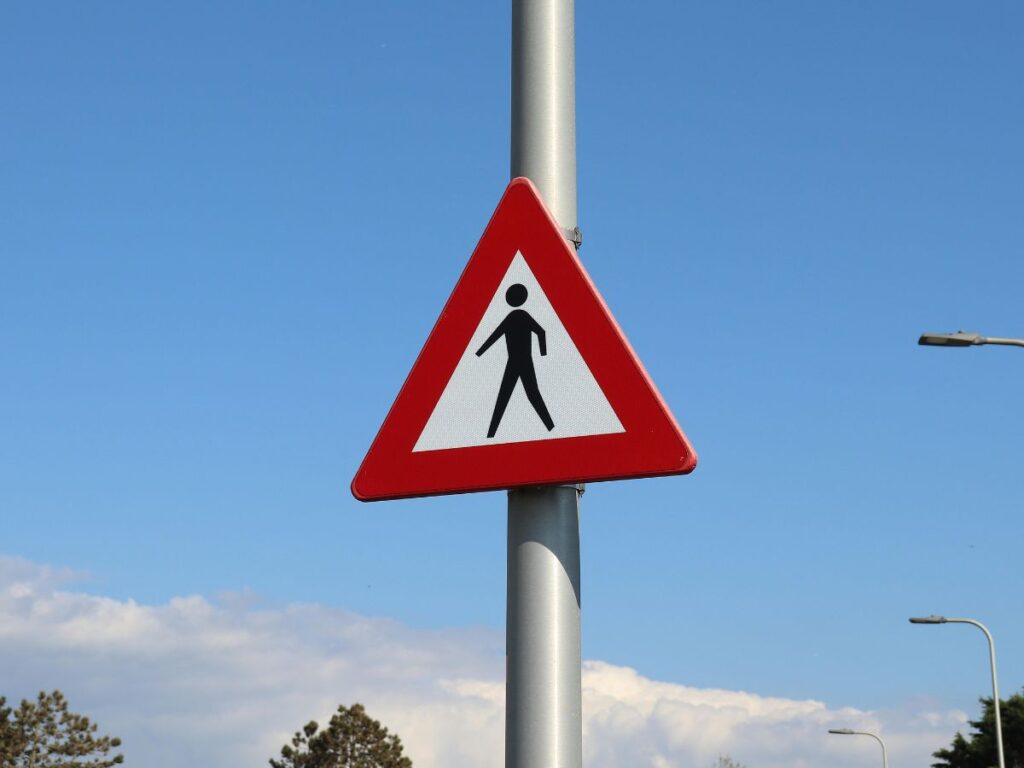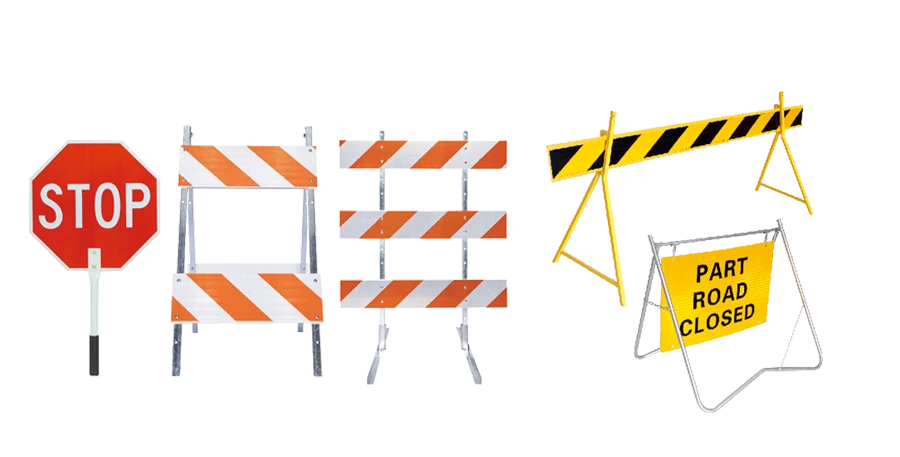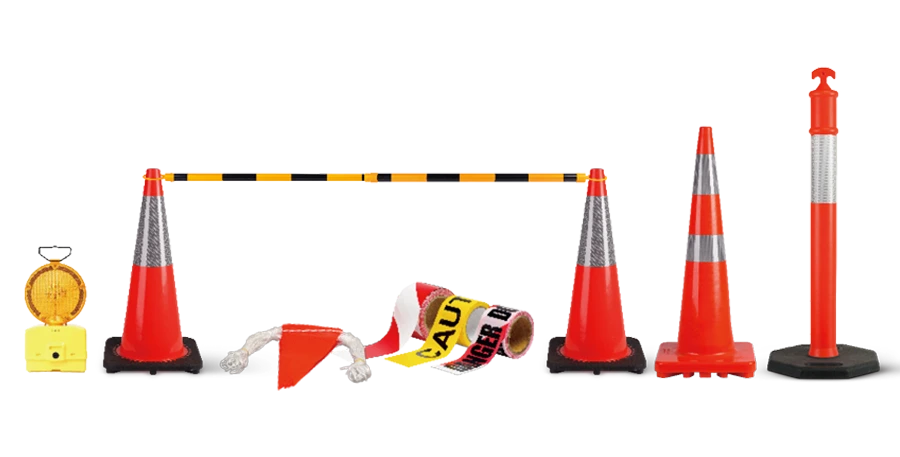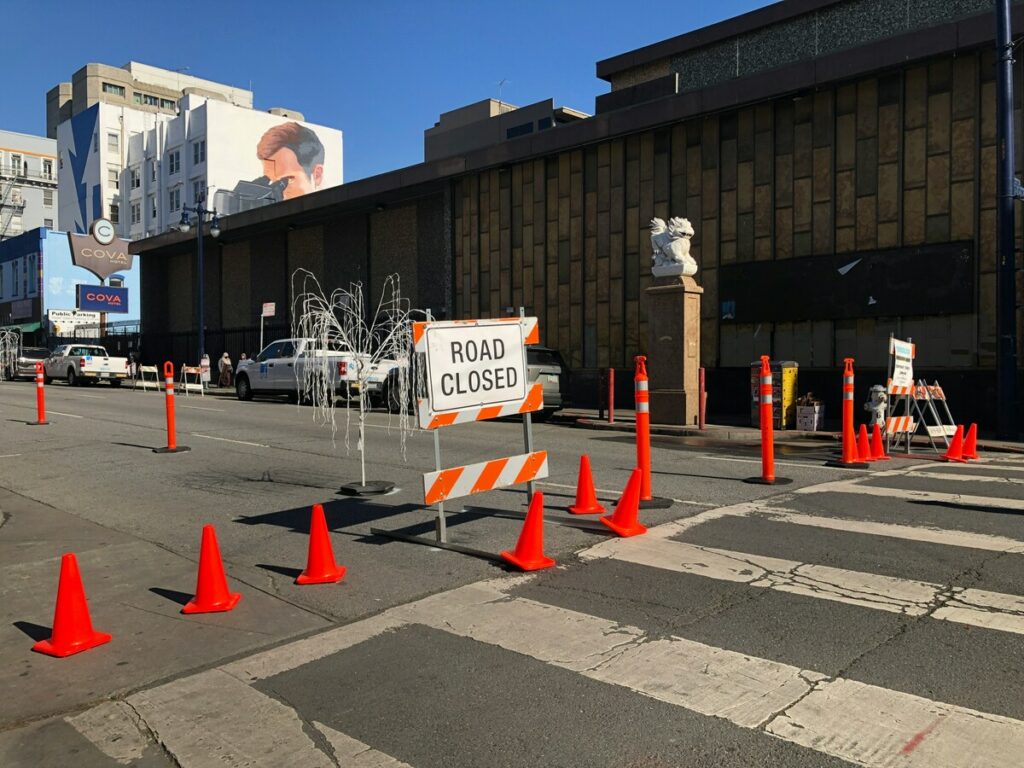
Les délimiteurs flexibles sont des outils essentiels pour gérer le trafic et améliorer la sécurité routière. Ces messages, fabriqué à partir de polyéthylène durable, sont conçus pour absorber les impacts et réduire les risques de blessures. Leurs bases en polycarbonate assurent la stabilité, tandis que les bandes réfléchissantes améliorent la visibilité la nuit. Vous les verrez souvent marquer des voies, courbes, ou intersections. Ils sont légers, résistant aux intempéries, et respecter les normes de sécurité telles que Mutcd et NCHRP-350.
Quand il s'agit d'installation, vous avez deux options principales: méthodes fixes et non fixes. Les installations fixes utilisent des boulons pour un placement permanent, idéal pour les zones à faible trafic. Les installations non fixes reposent sur des bases à dégagement rapide, ce qui les rend parfaits pour les installations temporaires ou les zones à fort trafic. Choisir la bonne méthode garantit que les délinéateurs fonctionnent efficacement et durent plus longtemps.
Installation fixe de délinéateurs de trafic
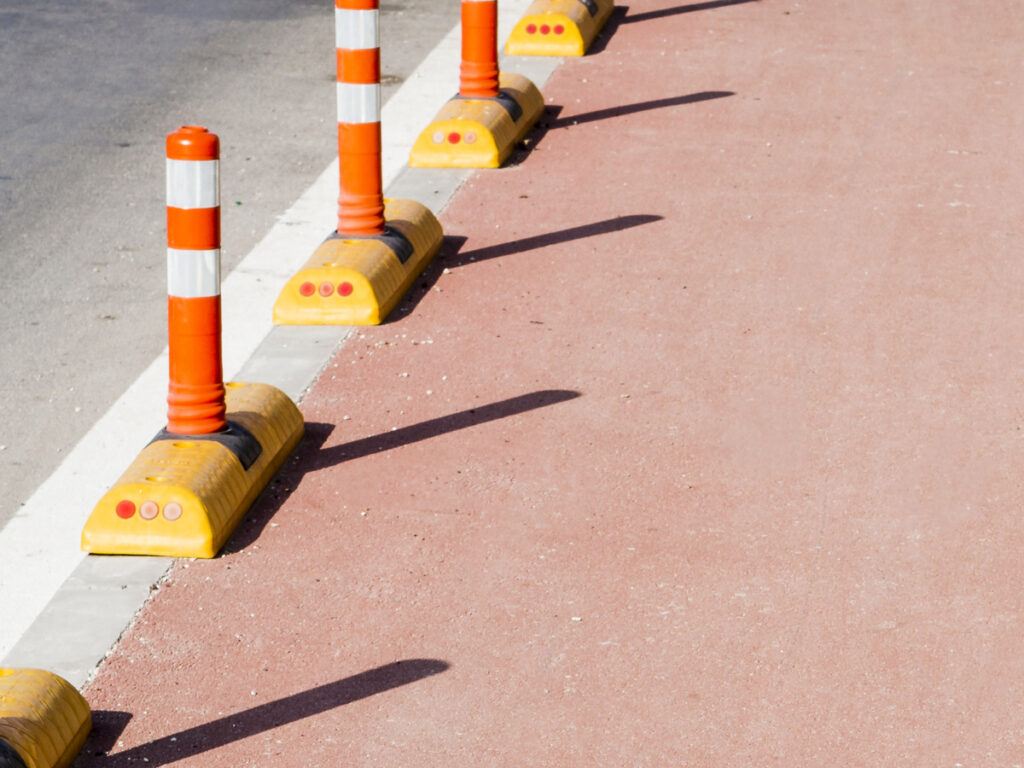
Outils et matériaux requis
Avant de commencer à installer des délimiteurs de trafic, rassembler tous les outils et matériels nécessaires. Voici ce dont vous aurez besoin:
- Délinéateurs flexibles à bases fixes
- Perceuse ou marteau
- Vis, boulons, et matériel de montage
- Ancrages en béton ou en asphalte
- Mètre à ruban
- Craie ou peinture en aérosol pour le marquage
- Équipement de protection comme des gants et des casques
Les bases fixes utilisent un système à boulonner, ce qui garantit que les délinéateurs restent bien en place. Ces bases sont fabriquées à partir de matériaux durables comme polycarbonate, alors que les poteaux sont généralement en polyéthylène. Cette combinaison offre flexibilité et performances durables.
Guide étape par étape
Marquer la position des délinéateurs
Commencez par mesurer la distance entre chaque délinéateur. Utilisez un ruban à mesurer pour assurer un espacement constant, habituellement entre 50 à 100 pieds. Marquez les endroits avec de la craie ou de la peinture en aérosol pour plus de précision.
Préparer la surface de la route
Vérifiez la surface de la route pour déceler des débris ou des matériaux meubles. Nettoyer soigneusement la zone pour assurer une bonne adhérence. Si la surface présente des fissures ou des dommages, réparez-le avant de continuer.
Percer des trous pour les ancrages
Utilisez une perceuse pour créer des trous aux endroits marqués. La profondeur et le diamètre des trous doivent correspondre aux spécifications de l'ancrage. Pour les surfaces dures comme le béton, une perceuse à percussion fonctionne mieux.
Installez l'ancre et sécurisez le délinéateur
Insérez les ancrages dans les trous percés. Fixez le poteau de délinéation flexible à l'ancrage à l'aide de vis ou de boulons. Assurez-vous que le poteau est droit et bien fixé.
Effectuer les vérifications finales
Inspectez chaque délinéateur pour vérifier son alignement et sa stabilité.. Utilisez un outil de niveau pour confirmer qu'ils sont droits. Donnez une légère poussée à chaque poteau pour vous assurer qu’il est bien en place.
Meilleures pratiques pour l'installation fixe
- Portez toujours un équipement de protection pendant l’installation.
- Vérifiez les mesures pour éviter tout désalignement.
- Utilisez des ancrages et des vis de haute qualité pour une meilleure durabilité.
- Inspectez régulièrement les délinéateurs après l’installation pour vous assurer qu’ils restent sécurisés.
Installation non fixe de délinéateurs flexibles

Outils et matériaux requis
Avant de commencer, rassemblez tout ce dont vous avez besoin pour une installation en douceur. Voici votre liste de contrôle:
- Délimiteurs de circulation flexibles avec bases lestées ou amovibles
- Mètre à ruban
- Craie ou peinture en aérosol pour marquer les positions
- Équipement de protection comme des gants et des casques
Les bases des délinéateurs non fixes sont généralement lestées ou caoutchoutées.. Ils sont conçus pour rester en place sans fixation permanente, les rendre idéaux pour des configurations temporaires.
Guide étape par étape
Marquer la position des délinéateurs
Commencez par mesurer la distance entre chaque délinéateur. Utilisez un ruban à mesurer pour assurer un espacement constant, typiquement 50 à 100 à pied. Marquez les endroits avec de la craie ou de la peinture en aérosol pour savoir exactement où les placer.
Positionner les bases du délinéateur
Placez les bases aux endroits marqués. Si la chaussée est lisse, pensez à utiliser des bases caoutchoutées ou à ajouter des poids supplémentaires pour une meilleure stabilité. Assurez-vous que chaque base est fermement positionnée.
Insérer les poteaux de délinéation
Insérez les poteaux de délinéation flexibles dans les bases. Poussez-les fermement pour vous assurer qu’ils sont sécurisés. Vérifiez que chaque poteau est bien droit et ne vacille pas.
Ajustements finaux et tests
Parcourez le parcours d’installation et inspectez chaque délinéateur. Ajustez leurs positions si nécessaire. Testez les poteaux en les poussant doucement pour confirmer qu'ils se remettent en place.. Cette étape garantit qu’ils fonctionneront bien dans des conditions réelles.
Surveillance et maintenance
Les délimiteurs non fixes peuvent se déplacer avec le temps en raison du vent ou de la circulation.. Vérifiez régulièrement leurs positions et repositionnez-les si nécessaire. Ajoutez des poids supplémentaires si vous remarquez une instabilité.
Meilleures pratiques pour l'installation non fixe
- Utilisez des bases lestées ou caoutchoutées pour une meilleure adhérence sur les surfaces lisses.
- Vérifiez à nouveau l’alignement de tous les délinéateurs après l’installation.
- Testez la flexibilité de chaque poste pour vous assurer qu’il répond aux normes de sécurité.
- Surveillez fréquemment les délinéateurs, en particulier dans les zones à fort trafic.
Pour la pointe: Pour les zones de construction ou les installations temporaires, les délimiteurs de circulation flexibles non fixes sont un excellent choix. Ils sont faciles à déplacer et ne laisseront pas de traces permanentes sur la route.
Délinéateurs flexibles OPTsigns fournir une excellente solution pour les besoins temporaires et permanents de gestion du trafic. Ces délimiteurs de trafic sont conçus pour résister aux conditions météorologiques difficiles et à un trafic intense., offrant une séparation claire des voies et guidant efficacement les conducteurs.
Comparaison des méthodes d'installation fixes et non fixes
Avantages et inconvénients de l'installation fixe
L'installation fixe offre une fiabilité, solution à long terme pour placer des délinéateurs. Vous trouverez cette méthode idéale pour les zones où la stabilité et la durabilité sont essentielles.. Voici ce que vous devez savoir:
Pros:
- Les délimiteurs fixes restent bien en place, Même dans les zones à fort trafic.
- Ils sont très durables, ce qui les rend parfaits pour les installations permanentes.
- Une fois installé, ils nécessitent un repositionnement ou des ajustements minimes.
Inconvénients:
- L'installation prend plus de temps et d'efforts. Vous aurez besoin d’outils comme des perceuses et des ancrages.
- Les supprimer ou les déplacer peut être difficile.
- Les installations fixes peuvent ne pas convenir aux installations temporaires ou aux zones nécessitant des changements fréquents.
Avantages et inconvénients de l'installation non fixe
L'installation non fixe est une question de flexibilité. C'est un excellent choix lorsque vous devez déplacer des délinéateurs ou les installer temporairement.. Décomposons-le:
Pros:
- Rapide et facile à installer. Vous n’aurez pas besoin d’outils lourds ni d’ancrages permanents.
- Parfait pour les installations temporaires, comme les zones de construction ou les configurations d'événements.
- Vous pouvez les repositionner selon vos besoins sans endommager la chaussée.
Inconvénients:
- Les délimiteurs non fixes peuvent changer avec le temps, surtout dans les zones venteuses ou à fort trafic.
- Ils nécessitent une surveillance régulière pour s’assurer qu’ils restent en place.
- Les bases lestées peuvent ne pas offrir suffisamment de stabilité sur des surfaces lisses ou inégales.
Quand utiliser chaque méthode
Le choix entre une installation fixe et non fixe dépend de vos besoins spécifiques. Si vous travaillez sur un projet permanent, comme marquer des voies ou des intersections, l'installation fixe est votre meilleur pari. Il garantit que les délinéateurs restent en place et fonctionnent bien dans le temps.
D'autre part, l'installation non corrigée brille dans les configurations temporaires. Que vous gériez la circulation dans une zone de construction ou que vous organisiez un événement public, cette méthode vous donne la flexibilité de vous adapter selon vos besoins. Plus, c'est rapide à installer et à démonter, vous faire gagner du temps et des efforts.
Conseil: Tenez compte des conditions routières, volume de trafic, et à quelle fréquence vous devrez déplacer les délinéateurs. Ces facteurs vous aideront à décider quelle méthode convient le mieux à votre situation..
Erreurs courantes à éviter lors de l'installation de délinéateurs
Même avec les meilleurs outils et matériaux, des erreurs lors de l’installation peuvent réduire l’efficacité de vos délinéateurs. Examinons quelques erreurs courantes et comment vous pouvez les éviter.
Désalignement des délinéateurs
L'alignement est essentiel lors de l'installation de délinéateurs. S'ils ne sont pas correctement alignés, ils peuvent dérouter les conducteurs au lieu de les guider. Un désalignement se produit souvent lorsque vous sautez la mesure ou que vous vous précipitez pour marquer les positions..
Pour éviter cela, mesurez toujours soigneusement l’espacement entre chaque délinéateur. Utilisez de la craie ou de la peinture en aérosol pour marquer les endroits exacts. Vérifiez à nouveau l’alignement avant de les sécuriser. Un petit conseil? Prenez du recul et regardez toute la rangée à distance. Cela vous aide à repérer d'éventuelles irrégularités avant de finaliser l'installation..
Utiliser des outils ou des matériaux incorrects
L’utilisation de mauvais outils ou matériaux peut entraîner une mauvaise installation. Par exemple, une perceuse standard peut avoir du mal avec des surfaces dures comme le béton, vous laissant frustré et avec des trous inégaux. De la même manière, les ancrages ou bases de mauvaise qualité peuvent ne pas résister à un trafic intense ou à des conditions météorologiques difficiles.
Assurez-vous d'avoir les bons outils pour le travail. Pour installations fixes, un marteau perforateur fonctionne mieux pour les surfaces dures. Pour les configurations non fixes, choisissez des bases lestées ou caoutchoutées pour plus de stabilité. Utilisez toujours des matériaux de haute qualité pour garantir que vos délinéateurs durent plus longtemps et fonctionnent bien..
Ne pas sécuriser correctement les délinéateurs
Si les délinéateurs ne sont pas bien fixés, ils peuvent vaciller ou même tomber. Cela réduit non seulement leur efficacité, mais crée également un risque pour la sécurité.. Les installations desserrées résultent souvent d'un serrage insuffisant des vis ou des boulons ou de l'omission du contrôle final de stabilité..
Après avoir installé chaque délimiteur de trafic, donnez-lui une légère poussée pour tester sa stabilité. Pour installations fixes, assurez-vous que les ancrages sont fermement en place. Pour les configurations non fixes, vérifier que les bases adhèrent bien à la surface. Inspectez régulièrement les délinéateurs après l'installation pour détecter rapidement tout problème..
Pour la pointe: Prendre votre temps lors de l'installation peut vous éviter des erreurs coûteuses plus tard. Un petit effort supplémentaire dès le départ garantit que vos délinéateurs restent efficaces et sûrs.
Ignorer la préparation de la surface
Ignorer la préparation de la surface peut sembler un gain de temps, mais cela peut entraîner de gros problèmes plus tard. Une surface mal préparée rend plus difficile le maintien des délinéateurs en place, en particulier dans les zones à fort trafic. Vous ne voulez pas que vos délinéateurs vacillent ou tombent, droite? C'est pourquoi il est si important de prendre quelques minutes supplémentaires pour préparer la surface..
Commencez par éliminer les débris, saleté, ou du matériel en vrac. Une surface propre assure une meilleure adhérence pour les installations fixes et plus de stabilité pour les bases non fixes. Si vous travaillez sur de l'asphalte ou du béton, vérifier s'il y a des fissures ou des endroits inégaux. Ces imperfections peuvent fragiliser l'installation. Les réparer au préalable donne à vos délinéateurs une base solide.
Pour installations non fixes, les surfaces lisses peuvent être délicates. Les bases lestées peuvent glisser ou se déplacer si la route est trop glissante. L'ajout de bases caoutchoutées ou de poids supplémentaires peut aider à maintenir tout en place. Il s’agit de créer les conditions idéales pour que vos délinéateurs fonctionnent de manière optimale..
Conseil: Ne précipitez pas cette étape. Un petit effort initial vous évite d'avoir à faire face à des délimiteurs mal alignés ou instables plus tard..
Négliger l’entretien régulier
Une fois vos délinéateurs portables installés, le travail n'est pas terminé. Un entretien régulier les maintient en bon état et fonctionne correctement. Négliger cette étape peut raccourcir leur durée de vie et réduire leur efficacité.
Voici ce que vous pouvez faire pour les entretenir:
- Nettoyez les poteaux avec des nettoyants non abrasifs pour conserver leur réflectivité nette.
- Serrez les boulons et repositionnez les délinéateurs mal alignés..
- Appliquer des revêtements résistants aux UV et anticorrosion pour protéger contre les dommages causés par les intempéries.
Inspecter la zone autour des délinéateurs portables, aussi. La végétation envahie peut bloquer la visibilité, tandis que les racines des arbres pourraient déstabiliser les bases. Les changements saisonniers peuvent également avoir des conséquences néfastes. Avant l'hiver, appliquer des revêtements protecteurs. En été, vérifier la déformation causée par la chaleur.
L’utilisation de matériaux de haute qualité comme le PE flexible pour les pièces de rechange peut également faire la différence. Ces matériaux résistent mieux aux impacts et aux intempéries, vous n'aurez donc pas besoin de les remplacer aussi souvent.
Pour la pointe: Un contrôle mensuel rapide peut vous faire économiser du temps et de l'argent à long terme. Considérez-le comme un investissement dans la sécurité et la durabilité.
L’installation de délinéateurs flexibles ne doit pas être compliquée. Vous avez deux options solides: méthodes fixes et non fixes. Les installations fixes sont parfaites pour les projets à long terme, tandis que les non fixes brillent dans des configurations temporaires. Chaque méthode a ses atouts, alors réfléchissez à vos besoins spécifiques avant de vous décider.
Conseil: Préparez toujours la surface et vérifiez votre alignement. Ces petites étapes font une grande différence en termes de performances et de durabilité.
Vous voulez que vos délinéateurs portables durent? Utiliser des matériaux de qualité, tester leur stabilité, et inspectez-les régulièrement. Un peu d'entretien contribue grandement à assurer la sécurité des routes et la fluidité de la circulation..


